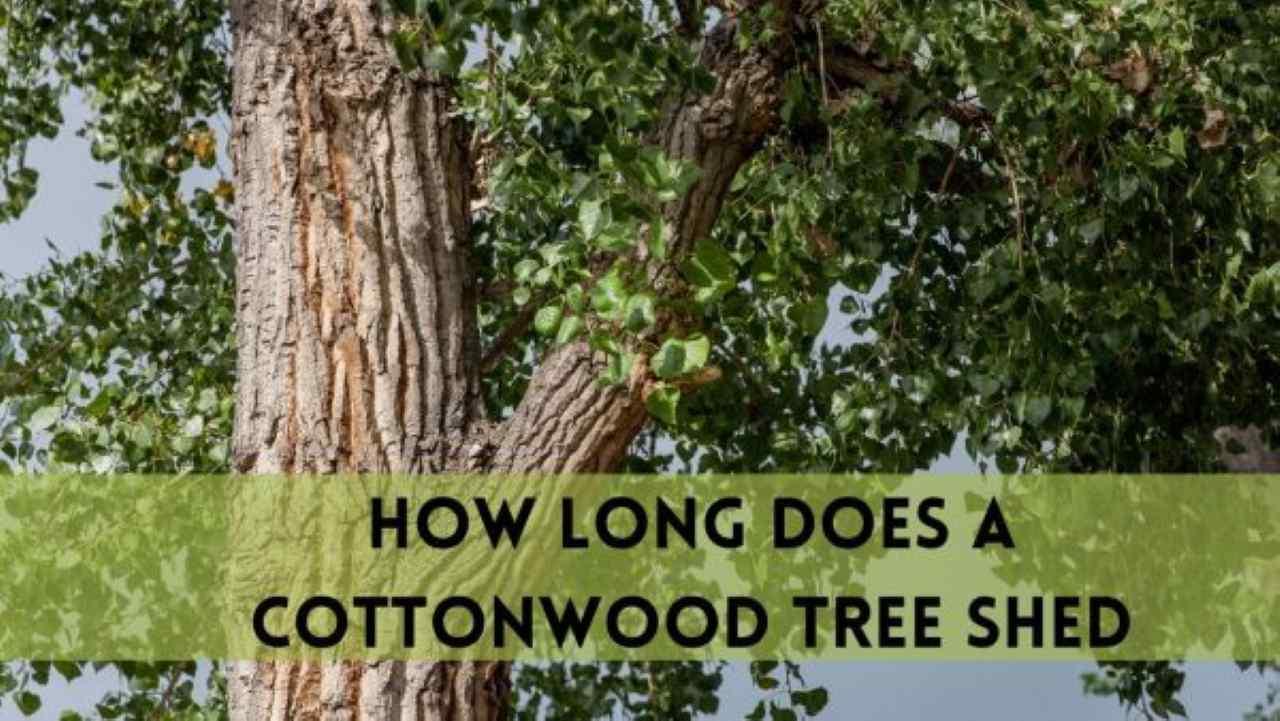How Long Does a Cottonwood Tree Shed? A Complete Guide

Cottonwood trees are beautiful, fast-growing giants that provide shade, habitat, and charm to many landscapes across North America. But come late spring or early summer, they start shedding—leaves, cotton fluff, twigs, and even bark—making quite a mess in yards, streets, and gutters. If you’ve ever found your lawn blanketed in white fluff, you’re not alone. But how long does this shedding last?
Let’s dive into the cottonwood’s shedding schedule and learn how to deal with the seasonal chaos.
What Makes Cottonwoods Unique?
Cottonwood trees (genus Populus) are part of the poplar family and are known for their towering size, rapid growth, and—yes—their signature cotton-like seeds. They're especially common in the U.S. Midwest and West.
These trees can live for decades and reach heights of up to 100 feet. But their most talked-about trait? The snowstorm of fluff they produce each year.
Why Do Cottonwoods Shed?
Shedding is part of a cottonwood’s natural lifecycle. Like many deciduous trees, they drop leaves in fall, but they go above and beyond by shedding:
-
Cottony seeds in late spring/early summer
-
Leaves in autumn
-
Bark and small twigs randomly throughout the year
This behavior helps the tree propagate, self-clean, and adapt to changing conditions.
The Shedding Cycle of a Cottonwood Tree
Seasonal Patterns
Cottonwood trees don’t shed all at once. Their shedding follows a seasonal rhythm:
-
Spring/Early Summer: Seed fluff (cotton) shedding
-
Fall: Leaf drop
-
Year-Round: Occasional bark and twig drop
Environmental Triggers
Climate
Shedding starts earlier in warmer climates and later in cooler ones. In areas like Texas or Arizona, shedding can begin in late May, while in northern states, it may not start until mid-June.
Soil Conditions
Dry or compacted soil may stress the tree, causing it to shed earlier or more aggressively.
Cottonwood Tree Shedding Timeline
Spring Cotton Shedding (Late May to Early July)
This is when female cottonwoods release fluffy, white seeds into the wind. It typically lasts 2 to 4 weeks, depending on temperature and rainfall.
Leaf Shedding in Fall (October to November)
Like most deciduous trees, cottonwoods drop their leaves as temperatures fall. This shedding lasts 3 to 6 weeks, and the duration depends on frost and wind conditions.
Bark and Twig Shedding
Cottonwoods naturally shed bark and small branches throughout the year, but most heavily during dry summers or storms.
How Long Does the Shedding Last?
Cotton Shedding Duration
Expect 2–4 weeks of heavy cotton drop. Some trees may shed longer, especially older or stressed trees.
Leaf Shedding Duration
Fall shedding is usually 3–6 weeks long. The duration may shorten with heavy winds or sudden cold snaps.
Twig and Bark Drop Duration
This is ongoing year-round, though usually minimal. It peaks during hot, dry summers or after storm damage.
Factors That Influence Shedding Duration
Tree Age and Health
Older or stressed trees tend to shed more aggressively and for longer periods.
Weather and Rainfall Patterns
Warm springs speed up cotton development, while wet weather can slow down seed release.
Species Differences
-
Eastern Cottonwood: Heavy shedders; large, fluffy seeds.
-
Fremont Cottonwood: Native to the Southwest; slightly lighter shedding.
-
Black Cottonwood: Common in the Pacific Northwest; moderate shedders.
The Mess Cottonwoods Leave Behind
How Much Cotton Is Too Much?
It depends on your tolerance. Some people say it looks like it’s “snowing in summer,” while others describe it as a seasonal nightmare.
Common Complaints From Homeowners
-
Clogged air conditioners and vents
-
Allergies and sneezing fits
-
Piles of fluff in corners and gutters
-
Unsightly lawns and patios
Managing Cottonwood Shedding
Raking and Leaf Collection
Weekly raking is your best friend during shedding season. Use a leaf blower or vacuum mulcher for fluff cleanup.
Dealing With Cotton Fluff
-
Use mesh filters over vents and AC units
-
Wet the fluff slightly before raking to prevent it from flying everywhere
-
Mow over the fluff to mulch it back into the lawn
Should You Trim or Remove?
Pruning won't stop cotton production, but it can reduce the mess slightly. For female trees, removal or tree injection treatments (to prevent seed production) may be necessary.
Are Cottonwood Trees Worth It Despite the Shedding?
Benefits of Cottonwoods
-
Excellent shade
-
Fast growth
-
Soil erosion control
-
Attractive landscape tree (when managed well)
When to Consider Removal
-
Repeated property damage (clogged drains, HVAC)
-
Severe allergies
-
Maintenance costs outweigh benefits
-
Weak branches that pose a safety risk
Conclusion
So, how long does a cottonwood tree shed? In a nutshell:
-
Cotton shedding lasts 2–4 weeks in late spring to early summer.
-
Leaf shedding lasts 3–6 weeks in the fall.
-
Bark and twig shedding happens intermittently all year.
Though the fluff and mess can be frustrating, cottonwoods have their place in the ecosystem and landscape—just be prepared for their dramatic seasonal shedding.
FAQs
1. How do I stop a cottonwood tree from shedding?
You can’t completely stop it, but tree injection treatments (e.g., Florel) applied in early spring can reduce cotton production in female trees.
2. Do all cottonwood trees shed cotton?
No, only female cottonwood trees shed cotton. Males do not produce the fluffy seeds.
3. Is cottonwood fluff dangerous?
Not really. It can be an allergen for sensitive individuals, but the fluff itself isn’t toxic or harmful.
4. Can I plant a cottonless variety?
Yes! Nurseries sell male cottonwood trees that don’t produce fluff. Ask for “cottonless” varieties.
5. Will trimming reduce cotton production?
No, trimming doesn’t affect seed production. Only hormone treatments or replacing the tree will stop it.
- Art
- Causes
- Crafts
- Dance
- Drinks
- Film
- Fitness
- Food
- Games
- Gardening
- Health
- Home
- Literature
- Music
- Networking
- Other
- Party
- Religion
- Shopping
- Sports
- Theater
- Wellness


